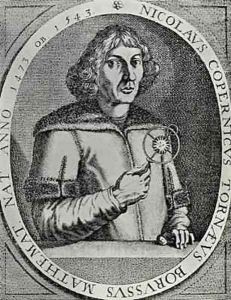Copernicus, Nicolaus Paintings
Nicolaus Copernicus was not primarily known as an artist but as a Renaissance-era mathematician and astronomer who formulated a model of the universe that placed the Sun rather than the Earth at the center of the universe. He was born on February 19, 1473, in the city of Toruń, in the province of Royal Prussia, in the Kingdom of Poland. His father, also named Nicolaus Copernicus, was a well-to-do merchant, and his mother, Barbara Watzenrode, came from a powerful family of merchants and municipal leaders.
Copernicus' intellectual curiosity led him to study at the University of Krakow, where he was exposed to a liberal arts education, including the humanities and sciences, which was typical of the era. However, it was after his university years that he began to develop his revolutionary astronomical model. He continued his education in Italy at the University of Bologna, where he studied canon law and medicine and was exposed to Renaissance humanism. He also studied at the University of Padua and earned a doctorate in canon law from the University of Ferrara.
Throughout his life, Copernicus continued to work on his heliocentric theory, which culminated in his seminal work, 'De revolutionibus orbium coelestium' (On the Revolutions of the Celestial Spheres), published just before his death in 1543. This work marks the beginning of the shift away from the geocentric model of the universe, which had been dominant since the time of Aristotle and Ptolemy. Copernicus' model had profound implications, not only for the field of astronomy but also for theology, philosophy, and the arts, influencing the way people perceive their place in the universe.
Although Copernicus' work was not directly related to visual arts, his ideas influenced the cultural and intellectual milieu of the Renaissance, contributing to the broader movement that fostered a spirit of inquiry and a quest for knowledge that was also reflected in the art of the period. Renaissance artists sought to explore perspective, anatomy, and the natural world with a new rigor and scientific approach, akin to the way Copernicus approached the cosmos.
Nicolaus Copernicus died on May 24, 1543, in Frauenburg (now Frombork), where he had spent much of his professional life. His death marked the end of an era and the beginning of a new epoch in the history of science. Although not an artist in the traditional sense, his influence on the cultural landscape of the Renaissance was substantial, contributing to the environment that allowed art and science to flourish in new and revolutionary ways.
